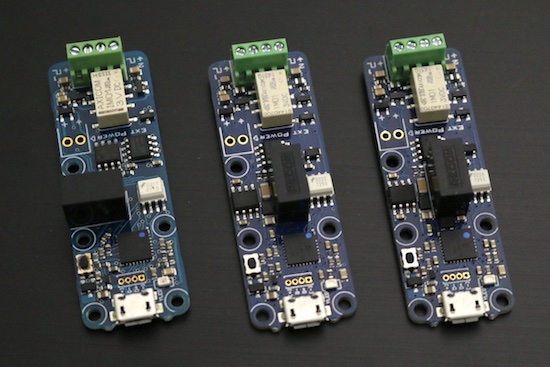![]() After four years of operation, we rejuvenate the Yocto-PWM-Tx this Spring, with hardware and software improvements. It naturally stays 100% compatible with the original version. Here is a small overview of what's new.
After four years of operation, we rejuvenate the Yocto-PWM-Tx this Spring, with hardware and software improvements. It naturally stays 100% compatible with the original version. Here is a small overview of what's new.
Hardware improvements
The most observers among you may have noticed that in Fall 2016 we already performed a small hardware update. Since then, the circuits have a Rev. B mark. At that time, we added a few components to reduce unwanted electromagnetic emissions and to protect outputs against possible transient overvoltages.
In a few weeks, you'll find the Rev. C mark. This new revision includes mainly the addition of a clock chip providing a much better accuracy for the generation of specified frequencies. Indeed, originally, we aimed at the accuracy of the duty cycle for this product, and not at the accuracy of the frequency itself. But as time went by, other applications for this module appeared, for which a good frequency accuracy was a must. Thus, this new revision now guaranties an accuracy of 0.1 per thousand on the frequency.

Look for the differences between these three generations of the Yocto-PWM-Tx...
Software improvements
Even if you don't buy a new Yocto-PWM-Tx, you can benefit from a few improvements by simply updating your module firmware, as we reworked it in depth.
Rational frequencies
The previous firmware never returned a frequency which wasn't a multiple of 1 Hz. For more accuracy, you had to work with the period, which was specified to the millisecond. You can now configure and retrieve the frequency as a rational number up to the millihertz.
Duty cycle transitions
Since the first versions of the product, you could ask the module to generate a linear transition between two duty cycles. But up to now, the smoothness of the transition depended on the module load, and was therefore not guarantied. This new firmware implements an accurately linear, step-by-step computation, up to about 31 kHz. Above 31 kHz, the duty cycle isn't modified for each step, but accurately each 62.5 us, which nevertheless guaranties a good linearity.

Step-by-step duty cycle transition, from 10% to 90%
Frequency transitions
For applications driven using the frequency, we also introduced the possibility to generate linear frequency transitions (constant cyclic acceleration). As for duty cycle transitions, they are computed step-by-step up to 31 kHz. Above 31 kHz, the frequency is accurately adapted each 62.5 us.

Example of a step-by-step linear frequency transition
Pulse sequences
Customers also asked us whether it was possible to use the Yocto-PWM-Tx to create a pulse sequence containing a fixed number of cycles. It's now possible: either from the idle state or from a basis cyclic state, you can generate a fixed number of pulses in frequency mode or with a specified duty cycle. Note that there as well, the exact count is possible up to 31 kHz only. Above, the duration of the pulse train is restricted to a multiple of 62.5 us.

Example of a sequence of 4 pules at 40%


